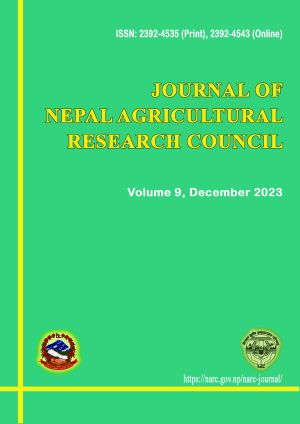Established in 2007 and hosted by Ubiquity.
Managed by Tribhuvan University Central Library.
Nepal Journals Online (NepJOL) is a service to provide online publication of Nepalese journals. For more information about NepJOL and how to join the service, see the About page.

The official journal of the Nepal Agricultural Research Council. Also available on its own website.
Authors can now submit articles online - register with the journal prior to submitting, or if already registered can simply log in and begin the 5 step process. Reviewers can also register with the journal.
